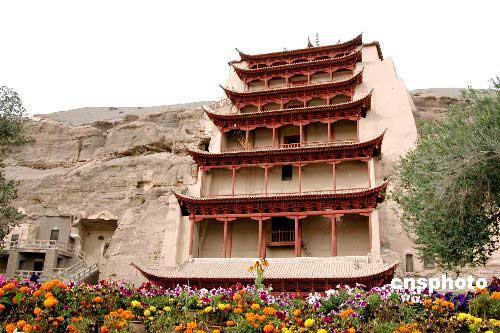
 |
| The Mogao Caves (cnsphoto) |
Watch Video: Mogao Grottoes at Dunhuang
Date of Inscription: 1987
World Cultural Heritage: The Mogao Caves
Chinese Name: Mo Gao Ku
English Name: The Mogao Caves
Approval Date: December 1987
Heritage category: Cultural heritage
Selection Criteria: Based on the standards C(I)(II)(III)(IV)(V)(VI) for selecting cultural heritage, the Mogao Caves was listed in the World Heritage List.
Evaluation of the World Heritage Committee:
The Mogao Caves is located at a strategically important point of the Silk Road. It was not only a freight station for the trade between eastern and western countries, but also a hub of different religions, cultures and knowledge. The 492 small caves and cave temples are famous around the world for their statues and frescos, which can show people vivid content of the thousand-year old Buddhist art.
Introduction:
The Mogao Caves is also called the Thousand-Buddha Caves, and the caves are on the rock face of the Soughing Dunes, 25 kilometers to the southeast of the Donghuang City in Gansu Province in western China. The place is dry and with very little rainfall, and has abundant sunlight all year round. It also has the four distinctive seasons and high temperature differences between the day and night. The Mogao Caves is over 1,600 meters long from north to south and is five floors high, with the highest point at about 50 meters above ground. Currently, it has 492 caves, over 45,000 square meters of frescos, 2,415 colored statues and over 4,000 statues of Apsaras (gods). The Mogao Caves is large in scale and has extremely abundant content and a very long history. The caves, together with the Yungang Caves in Shanxi Province and the Longmen Caves in Henan Province are called the "three great treasure houses of grotto art" in China.

















 Rainstorms flood more than 10,000 cars in underground garages in Wuhan
Rainstorms flood more than 10,000 cars in underground garages in Wuhan


![]()
